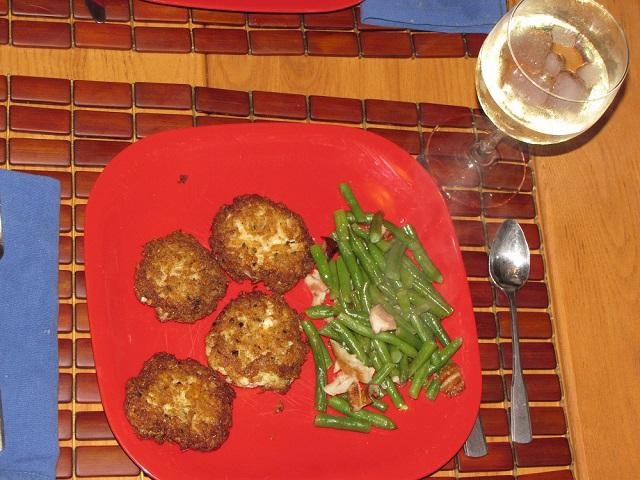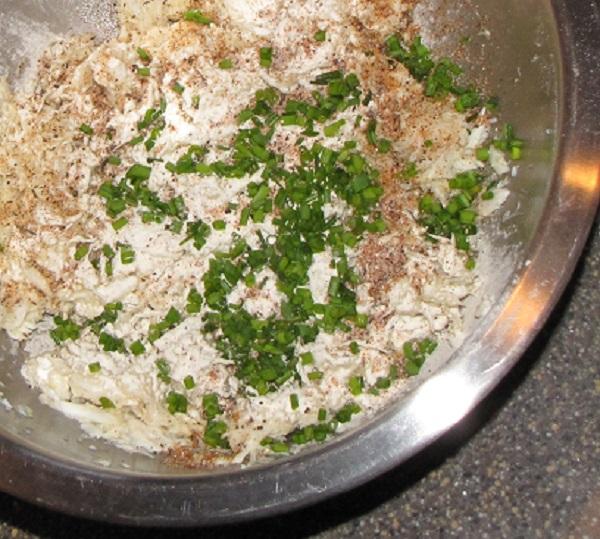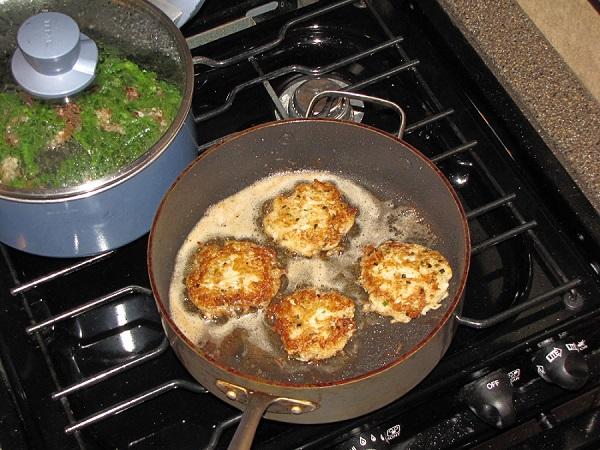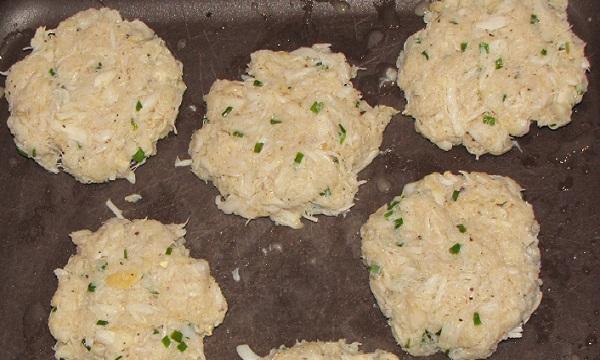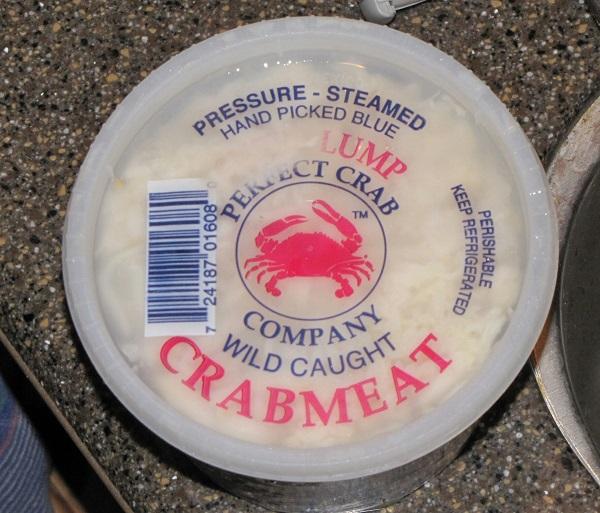-
Posts
13,743 -
Joined
-
Last visited
Content Type
Profiles
Forums
Store
Help Articles
Everything posted by Smithy
-
Blether, thank you for the recipe, as well as the link in your following post. One question (only one, at the moment): why does the fold go into the top (exposed part) of the pan? I'd have been inclined to tuck it into the bottom. I'll let the experts address your questions. I just want to admire the pattern made by the seed coating and the slashes. Beautiful!
-

How Do You Feel About Buying and Using e-Cookbooks?
Smithy replied to a topic in Cookbooks & References
Let us not forget: a lot of libraries now have e-books on loan, including e-cookbooks. Just as with a hard-copy loan, you can borrow the book for a set time period. Sometimes I've gone on to purchase the e-book for myself after the loan ended, and sometimes not. -

How Do You Feel About Buying and Using e-Cookbooks?
Smithy replied to a topic in Cookbooks & References
I think he's asking about alternate payment options. Gift cards are an option: they're basically prepaid debit cards that have a set amount and aren't linked to your bank account. Amazon has them, and I'll bet the others have them also. -

Lime Shortage Affects Cocktail Bars, Restaurants...and You
Smithy replied to a topic in Kitchen Consumer
Wow. At the risk of going off on a tangent, how does that price (20/$1 or even 30-40/$1) compare with the cost of other fruit sold there, say, lemons? What other citrus are commercially farmed there? -
So far I haven't been near an Indian grocery, but I'll keep an eye out. In the meantime, I'm still trying to work out how much tamarind to subtitute for the kokum. Any ideas?
-
Thanks for bringing this topic back up, Hassouni. I'd forgotten about it entirely! I made my first attempt at falafel earlier this fall, but it was from a mix. It came out pretty well and was a good way for this first-timer to get into it. We liked the results well enough to pursue it further, although the cleanup was a nightmare. (I really hate deep-frying in the kitchen.) As to your question about oil: I can think of a couple of ways it might change, not all for the better. If bits of coating and spices are staying with the oil (as with my last attempt at fried fish), they'll eventually start to brown and lend more seasoning to the oil. Taken far enough and hot enough, they'll turn to bits of carbon, and not be so tasty. A skilled fry-cook, which I am not, can presumably control the oil temperature to keep that from happening, and that may be the source of the idea that the old oil is better. It's also possible with certain foods that they'll release fats and flavors of their own into the cooking oil, thereby flavoring the oil for later rounds of frying. I'm not sure I believe that falafel mix would do that, though. Cooking oil can go rancid if used long enough, of course, and I draw the line at saying that's better. One of my most miserable food experiences ever was fried okra (bamya) in very old oil, in Aswan. My companions loved it; I was off my food for days.
-
That's a clever way to rescue a disaster, Anna. I'm surprised no baker has come along to say something like "your bread collapsed because it was overmixed" or "looks like you needed less xxx" or (you can tell I don't know the answer). I hope you figure it out and let us know. Naan with Vache qui rit! Lamb tagine! I look forward to the results!
-
I've been trying my hand at making crab cakes lately, inspired by The Pat Conroy Cookbook and the advertisements of "fresh crab" (in packages) here where we're traveling. Conroy proudly claims that he'll take all comers with his recipe, and it looks simple enough: fresh crab meat, a little bit of egg white whipped to a froth as a binder, some chives, other seasonings. Mix it gently, shape it, chill it, fry it. He does not use soda crackers or bread as a binder because, he says, if he wants to taste a soda cracker, he'll eat a soda cracker, not put it into his crab cakes. So far I've tried it twice, with blue crab meat from two different sources. The first time around, we looked at each other. "Eh, tastes fishy!" Not around the browned edges, but in the middle. Was the crab meat not really fresh, or did I do something wrong? The second time around, I asked the fishmonger about his source. "It comes from Mexico," he said, "and you can smell the crab before you buy it." I did. Being a crab newbie I wasn't sure what to smell for, but it didn't smell fishy. The container: The mixture: Just before chilling: Frying them up: Dinner! This time around, we liked them. I called Mr. Allex back and thanked him. He said, "You have to smell the crab meat. That's the only way to know if you're getting it fresh enough." I can't wait to try telling them that, back home in northern Minnesota. Getting the meat from a different source wasn't the only change I made. I flattened the cakes more the second time around, to make sure they cooked completely at the center. I also browned them a bit more, to make sure I had a lot of those good, savory compounds from browning reactions. So, my questions: was the "fishy" crab meat flavor the first time around due to the meat (which had smelled fine when I opened the container) or due to undercooking? Am I doomed to only eat crab meat when I'm on some coast? I'd like to explore this topic more, but the price of crab meat makes the experimentation pretty spendy.
-
Soba, I've never heard of kumquat vinegar. Is this something you've made yourself (if so, how?) or purchased?
-
Blether, that's a beautiful loaf. Whose recipe, or which cookbook, is it from?
-
I envy you those ramps, Soba. They'll be coming up in our woods soon, if the snow ever melts, but I haven't seen them in any stores we've visited.
-
That's an interesting question. Is this the future (or even the present) for getting published?
-
Building on what heidih said above; cod is a mild white fish, like many other mild white fish, that have their own delicate flavor, although their textures vary. If you want more punch, perhaps you should be looking at fish with a more assertive flavor? In my household there's the faction that prefers mild white fish with sauce or breading, and the other faction that prefers fish with its own flavor: salmon, trout, tuna, swordfish.
-

Lime Shortage Affects Cocktail Bars, Restaurants...and You
Smithy replied to a topic in Kitchen Consumer
2/$1 along the Texas Gulf Coast, today. -
Thanks for that link, heidih. I don't know whether to feel inspired or discouraged, but I'm certainly more well-informed than I was about the process of writing a cookbook and getting it published.
-
Franci raises a good point. I have a couple of bags of sea salt (coarse and fine) that I bought in some Oriental grocery store or other. If the bulk store idea doesn't work out, you're bound to have access to an Oriental grocer or three.
-
I've been doing similar tests, provoked in part by utter failure at peeling "old" supermarket eggs that had been boiled, regardless of the treatment (cold water dunk afterward, or not, and so on). The first few dozen steamed eggs had me convinced it was a failsafe method for fresh or supermarket eggs, and then we started seeing some steamed eggs that still didn't peel easily. Without having kept careful records, I'd say our success rate for steamed eggs is somewhere in the 80 - 90% range, better than with boiled eggs. We still need to do a more careful study in our household.Anna, I've found 5 minutes of active steaming to be adequate to fully cook the eggs; granted, I usually turn the flame off and leave the eggs in the steamer basket until they're cool enough to handle.
-
Shel_B, do you have something like a Whole Foods Coop (not the grocery store Whole Foods) in your area? If so, you can buy salt in bulk and put it in your own container. Where I live, we can bring our own containers, get the tare weight, and fill them at the store. It's very economical way to purchase bulk seasonings and spices.
-
Oh, that looks luscious!
-
Those look wonderful, dcarch. I particularly like the color balance on the broccoli stems and trout.
-
I am so sorry to read the news of Steven's abrupt and all-too-early passing. Like many other people here, I am immensely grateful for the friendships, collaborations, skills and knowledge that I've gained because of his and his co-founders' extraordinary vision. Where else could home cooks and students rub figurative elbows with professional chefs and cookbook writers? I wish I'd known him better. My prayers and sympathies go to Ellen, PJ, and all those who knew and loved him. I think Steven, writing as Fat Guy, may have been the first person to make me laugh at my computer screen, so loudly that people came from down the hall to see what could possibly be so funny. I give you this link to his Rosemary story: http://forums.egullet.org/topic/52723-food-smells-favorites-least-favorite/?p=729410 God speed, Steven. Thank you for everything.
-
Jaymes and Kenneth T, thank you for the encouragement on the citrus! In fact I did have a potted dwarf mandarin that flowered beautifully for many seasons but never produced fruit worth tasting. It expired some years ago, no doubt due to some mismanagement on my part. Maybe I'll try again, and go for limes.
-

How Do You Feel About Buying and Using e-Cookbooks?
Smithy replied to a topic in Cookbooks & References
I have a mix of the two. I still prefer leafing through hard-copy books and magazines for inspiration, and I find it easier - well, slightly less risky, anyway - to have a cookbook or printout sitting on the counter than to have my tablet on the counter. (I've had to replace the keypad/docking station because of an expensive mishap with a fresh batch of salad dressing.) I also find it easier to put intelligible bookmarks in magazines and cookbooks, although they're usually just random pieces of scrap paper, or occasionally color coded Post-It notes. Since we began traveling so much, I've started down the path of ecookbooks for their ease of transport. I find I can get just as wrapped up in a good electronic read as with a good paper read, and the programs do allow for bookmarks of a sort. Inkling has just released their Android beta platform, and that's supposed to allow notes to be added. I'll be interested to see how well it works. The biggest risk, I find, is forgetting that I have a particular book. At first I thought it was peculiar to the electronic format - I don't keep seeing it when I look at the bookshelf - but, in fact, I've rediscovered old favorite hard-copy books too, as in: 'wait, when did I get that?!' :-D -
Jaymes, I envy you those citrus trees! If I ever move (permanently) south, one reason will be so I can have my own citrus and Mediterranean herbs. It isn't just the fruit, it's the lovely perfume of those blossoms! There's nothing like it. I hope you're educating yourself about potential citrus diseases, particularly this one, and monitoring your trees' health.
-
I haven't opened it yet, since our cooking plans are set for the next several days with various treatments of fresh seafood. When I open it I'll report back on the texture and odor. That label makes a pretty attractive case for skillets and meat, doesn't it? I think that was one of the things that attracted me. :-)


